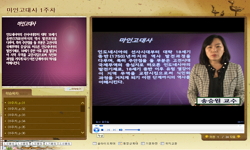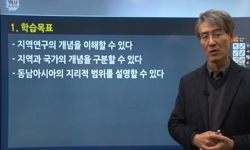In this article, I surveyed the historical and stylistic development of ancient southeast Asian earrings, which remained in plenty but have never been researched in Korea before. Southeast Asian peoples have worn many kinds of earrings by piercing the...
http://chineseinput.net/에서 pinyin(병음)방식으로 중국어를 변환할 수 있습니다.
변환된 중국어를 복사하여 사용하시면 됩니다.
- 中文 을 입력하시려면 zhongwen을 입력하시고 space를누르시면됩니다.
- 北京 을 입력하시려면 beijing을 입력하시고 space를 누르시면 됩니다.
https://www.riss.kr/link?id=A60226637
- 저자
- 발행기관
- 학술지명
- 권호사항
-
발행연도
2012
-
작성언어
Korean
- 주제어
-
등재정보
KCI등재
-
자료형태
학술저널
-
수록면
187-214(28쪽)
-
KCI 피인용횟수
7
- 제공처
- 소장기관
-
0
상세조회 -
0
다운로드
부가정보
다국어 초록 (Multilingual Abstract)
In the ancient southeast asia, many people wore peculiar thick earrings called “Ling ling-o”. Most ancient Ling ling-o earrings were made in the local workshops. But in most case, the material itself was light green nephrite from the Fengtian mine in southern Taiwan. Such earrings were discovered in many archaeological sites of Southeast Asia, such as Vietnam and Philippines. Such geographical distribution of this Taiwanese nephrite Ling ling-o earring reveals the cultural and economical exchanges between the southeast Asia and Taiwan through the sea route.
During the early historical period, the nephrite Ling ling-o earrings were changed into a “C” shaped metal earrings. A stone mold for making “C” shaped earrings was excavated from an archaeological site of Funan in Southern Vietnam. In addition, some gilt bronze and gold “C” shaped earrings were discovered at several archaeological sites of Vietnam, Thailand and Indonesia. The usage of such metal earrings had continued for a long time, even until the modern era.
The most famous traditional metal earring type in Modern Southeast Asia is “Mamuli”, an eccentric gold earring of Sumba Island in Indonesia. The main shape of Mamuli gold earring comes from the traditional “C” shaped thick earrings but modern Mamuli earrings have many symmetrical descriptive decorations with main shape. These Mamuli earrings are worn during the ancestral ceremonies in Sumba Island to honor their ancestors.
From ancient Ling ling-o to modern Mamuli, ancient southeast asian earrings share the main thick “C” shaped and enlarged piercing tradition. Such typical earring tradition of ancient Southeast Asia shows the cross cultural relationships not only between far distant regions but also between far distant times. Those earrings are very important as material and visual evidences to understand the jewelry customs and cultural exchanges of the ancient Southeast Asian culture and the other worlds.
In this article, I surveyed the historical and stylistic development of ancient southeast Asian earrings, which remained in plenty but have never been researched in Korea before. Southeast Asian peoples have worn many kinds of earrings by piercing their earlobes from the Neolithic period to the present. Some of those earrings were too big and thick to wear, but those were worn in the holes of each owner’s earlobe, which were penetrated during the childhood and enlarged from time to time until the owner became an adult. This piercing tradition might be transmitted to Southeast Asia from Indian subcontinent, and later influenced the southern part of ancient Korean peninsula.
In the ancient southeast asia, many people wore peculiar thick earrings called “Ling ling-o”. Most ancient Ling ling-o earrings were made in the local workshops. But in most case, the material itself was light green nephrite from the Fengtian mine in southern Taiwan. Such earrings were discovered in many archaeological sites of Southeast Asia, such as Vietnam and Philippines. Such geographical distribution of this Taiwanese nephrite Ling ling-o earring reveals the cultural and economical exchanges between the southeast Asia and Taiwan through the sea route.
During the early historical period, the nephrite Ling ling-o earrings were changed into a “C” shaped metal earrings. A stone mold for making “C” shaped earrings was excavated from an archaeological site of Funan in Southern Vietnam. In addition, some gilt bronze and gold “C” shaped earrings were discovered at several archaeological sites of Vietnam, Thailand and Indonesia. The usage of such metal earrings had continued for a long time, even until the modern era.
The most famous traditional metal earring type in Modern Southeast Asia is “Mamuli”, an eccentric gold earring of Sumba Island in Indonesia. The main shape of Mamuli gold earring comes from the traditional “C” shaped thick earrings but modern Mamuli earrings have many symmetrical descriptive decorations with main shape. These Mamuli earrings are worn during the ancestral ceremonies in Sumba Island to honor their ancestors.
From ancient Ling ling-o to modern Mamuli, ancient southeast asian earrings share the main thick “C” shaped and enlarged piercing tradition. Such typical earring tradition of ancient Southeast Asia shows the cross cultural relationships not only between far distant regions but also between far distant times. Those earrings are very important as material and visual evidences to understand the jewelry customs and cultural exchanges of the ancient Southeast Asian culture and the other worlds.
목차 (Table of Contents)
- Ⅰ. 머리말
- Ⅱ. 피어싱과 대형 귀걸이 착장 전통
- Ⅲ. 옥제 링링오 귀걸이의 유행과 전파
- Ⅳ. 금속제 대형 귀걸이의 등장과 발전
- Ⅴ. 고대 귀걸이 양식의 지속성과 변화
- Ⅰ. 머리말
- Ⅱ. 피어싱과 대형 귀걸이 착장 전통
- Ⅲ. 옥제 링링오 귀걸이의 유행과 전파
- Ⅳ. 금속제 대형 귀걸이의 등장과 발전
- Ⅴ. 고대 귀걸이 양식의 지속성과 변화
- Ⅵ. 맺음말
- 참고문헌
- ABSTRACT
참고문헌 (Reference)
1 강희정, "푸난(扶南) 불교조각의 연원과 전개" 미술사와 시각문화학회 (8) : 40-67, 2009
2 류창환, "아시아의 고대 문물교류" 서경문화사 2012
3 주경미, "韓國 古代 耳飾의 着裝方式 硏究" 한국역사민속학회 17 : 2003
4 동북아역사재단, "譯註中國正史外國傳6南齊書·梁書·南史外國傳譯註" 동북아역사재단 2010
5 Tan, Heidi, "Viêt Nam-From Myth to Modernity" Asian Civilizations Museum 2008
6 Bacus, Elisabeth A., "Uncovering Southeast Asia’s Past" NUS Press 2006
7 Untracht, Oppi, "Traditional Jewelry of India" Thames and Hudson 1997
8 Tarling, Nicholas, "The Cambridge History of Southeast Asia, volume one, part one, From Early times to c.1500" Cambridge University Press 1999
9 Briggs, Lauwrence Palmer, "The Ancient Khmer Empire" The American Philosophical Society 41 (41): 1951
10 Glover, Ian, "Southeast Asia: From Prehistory to History" RoutledgeCurzon 2004
1 강희정, "푸난(扶南) 불교조각의 연원과 전개" 미술사와 시각문화학회 (8) : 40-67, 2009
2 류창환, "아시아의 고대 문물교류" 서경문화사 2012
3 주경미, "韓國 古代 耳飾의 着裝方式 硏究" 한국역사민속학회 17 : 2003
4 동북아역사재단, "譯註中國正史外國傳6南齊書·梁書·南史外國傳譯註" 동북아역사재단 2010
5 Tan, Heidi, "Viêt Nam-From Myth to Modernity" Asian Civilizations Museum 2008
6 Bacus, Elisabeth A., "Uncovering Southeast Asia’s Past" NUS Press 2006
7 Untracht, Oppi, "Traditional Jewelry of India" Thames and Hudson 1997
8 Tarling, Nicholas, "The Cambridge History of Southeast Asia, volume one, part one, From Early times to c.1500" Cambridge University Press 1999
9 Briggs, Lauwrence Palmer, "The Ancient Khmer Empire" The American Philosophical Society 41 (41): 1951
10 Glover, Ian, "Southeast Asia: From Prehistory to History" RoutledgeCurzon 2004
11 Solheim, Wilhelm G. II, "Remarks on ‘The lingling-o and bi-cephalous ornament" Hong Kong Archaeological Society 10 : 1983
12 Reinecke, Andreas, "Recent Discoveries in Vietnam: Gold Masks and Other Precious Items" Arts of Asia Publication Limitied 39 (39): 2009
13 Benitez-Johannot, Purissima, "Paths of Origins: The Austronesian Heritage in the Collections of The National Museum of the Philippines, The Museum National Indonesia and The Netherlands Rijksmuseum voor Vlkenkunde" ArtpostAsia 2011
14 Miksic, John, "Old Javanese Gold" Odeation 1990
15 Iizuka, Yoshiyuki, "Mineralogical Studies of the Niah West Mouth Jade Lingling-o" Sarawak Museum 61 (61): 2005
16 Pelliot, Paul, "Le Fou-Nan, In Bulletin de l’École Française D’extrême-Orient, Tome 3" École Française D’extrême-Orient 1903
17 Richter, Anne, "Jewelry of Southeast Asia" Harry N. Abrams 2000
18 Pandey, Rajbali, "Hindu Saṃskāra: Socio-Religious Study of the Hindu Sacrament, second edition" Motiral Banarsidass Publishers 1993
19 Richter, Anne, "Gold Jewellery of the Indonesian Archipelago" Editions didier Millet 2011
20 Vickery, Michael, "Funan Reviewed: Deconstructing the Ancient" 90-91 : 2004
21 Coedès, George, "Fouilles en Cochinchine : Le Site de Go Oc Eo, Ancient Port du Royaume de Fou-Nan" Artibus Asiae 10 (10): 1947
22 Carpenter, Bruce W., "Ethnic Jewellery from Indonesia–Continuity and Evolution, The Manfred Giehmann Collection" Editions didier Millet 2011
23 Postel, Michel, "Ear Ornaments of Ancient India" Franco-Indian Pharmaceuticals 1989
24 Tingley, Nancy, "Arts of Ancient Viet Nam: From River Plain to Open Sea" Yale University Press 2009
25 Khoo, James C. M., "Art & Archaeology of Fu Nan: Pre-Khmer Kingdom of the Lower Mekong Valley" Orchid Press 2003
26 Solheim, Wilhelm G. II, "Archaeology and Culture in Southeast Asia: Unraveling the Nusantao" University of Hawaii Press 2007
27 Bellina, Bérénice, "50 Years of Archaeology in Southeast Asia: Essays in Honour of Ian Glover" River Books 2010
동일학술지(권/호) 다른 논문
-
재조선 일본인 화가 구보타 덴난(久保田天南)과 朝鮮南畵院
- 한국미술연구소
- 황빛나(Hwang, Binna)
- 2012
- KCI등재
-
- 한국미술연구소
- 임영애(林玲愛)
- 2012
- KCI등재
-
- 한국미술연구소
- 박은경(朴銀卿)
- 2012
- KCI등재
-
- 한국미술연구소
- 하타 야스노리(畑靖紀)
- 2012
- KCI등재
분석정보
인용정보 인용지수 설명보기
학술지 이력
| 연월일 | 이력구분 | 이력상세 | 등재구분 |
|---|---|---|---|
| 2027 | 평가예정 | 재인증평가 신청대상 (재인증) | |
| 2021-01-01 | 평가 | 등재학술지 유지 (재인증) |  |
| 2018-01-01 | 평가 | 등재학술지 유지 (등재유지) |  |
| 2015-01-01 | 평가 | 등재학술지 유지 (등재유지) |  |
| 2011-01-01 | 평가 | 등재학술지 유지 (등재유지) |  |
| 2009-03-23 | 학회명변경 | 한글명 : (재)성강문화재단 한국미술연구소 -> 한국미술연구소영문명 : Sung Kang Foundation -> Center for Art Studies |  |
| 2008-01-01 | 평가 | 등재학술지 선정 (등재후보2차) |  |
| 2007-01-01 | 평가 | 등재후보 1차 PASS (등재후보1차) |  |
| 2005-06-29 | 학회명변경 | 한글명 : (재)성강문화재단 -> (재)성강문화재단 한국미술연구소영문명 : Sungn Gang Culture Foundation -> Sung Kang Foundation |  |
| 2005-01-01 | 평가 | 등재후보학술지 선정 (신규평가) |  |
학술지 인용정보
| 기준연도 | WOS-KCI 통합IF(2년) | KCIF(2년) | KCIF(3년) |
|---|---|---|---|
| 2016 | 0.84 | 0.84 | 0.81 |
| KCIF(4년) | KCIF(5년) | 중심성지수(3년) | 즉시성지수 |
| 0.72 | 0.61 | 0.836 | 0 |




 KCI
KCI DBpia
DBpia







